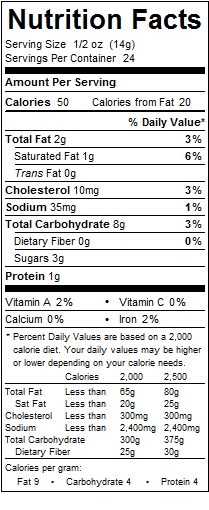No, whey protein isn’t paleo…but it sure is convenient to have a portable, non-perishable, and relatively cheap source of quickly-digested protein for when I don’t have access to real food or the time to cook it.
However, as with any dietary supplement, we must always be on the alert for misleading packaging or adulterants—as white pills and white powders all look basically the same.
This is yet another reason to prefer real food: it’s much harder to counterfeit eggs, vegetables, or a steak than it is to counterfeit pills and powders.
How I Found The Gluten
I purchase unflavored whey protein for several reasons. First, it’s typically sweetened with Splenda (sucralose):
Journal of Toxicology and Environmental Health, Part A, Volume 71, Issue 21 January 2008 , pages 1415 – 1429
Splenda Alters Gut Microflora and Increases Intestinal P-Glycoprotein and Cytochrome P-450 in Male Rats
Mohamed B. Abou-Donia; Eman M. El-Masry; Ali A. Abdel-Rahman; Roger E. McLendon; Susan S. Schiffman“Evidence indicates that a 12-wk administration of Splenda exerted numerous adverse effects, including (1) reduction in beneficial fecal microflora, (2) increased fecal pH, and (3) enhanced expression levels of P-gp, CYP3A4, and CYP2D1, which are known to limit the bioavailability of orally administered drugs.”
…
“The intake of Splenda by rats significantly reduced the number of indigenous intestinal bacteria resident in the gut, with the greatest suppression for the generally beneficial anaerobes (e.g., bifidobacteria, lactobacilli, and Bacteroides).”
…
“The reduction in intestinal bacteria in this study was accompanied by an increase in fecal pH that typically occurs when there is a decrease in the production of short-chain fatty acids (SCFA) by colonic bacteria.”
…
“At the end of the 12-wk treatment with Splenda, numerous alterations were observed that did not occur in control animals, including lymphocytic infiltrates into epithelium, epithelial scarring, mild depletion of goblet cells, glandular disorganization, and focally dilated vessels stuffed with intravascular lymphocytes.”And in case that isn’t bad enough, even the lowest Splenda dose apparently caused a significant increase in body weight.
The second reason: buying whey protein that tastes like a chocolate milkshake or a cinnamon bun (yes, that flavor exists) would just tempt me to consume it instead of real food.
The third reason, and the one most important to this story, is that I can taste if the product has been adulterated. Most whey powders are so heavily flavored and sweetened that they could be made of laundry detergent and no one would notice. And sure enough, upon snapping up a ‘bargain’ from a source I’d never bought from before, I found that it tasted like powdered Ebola virus mixed with oven cleaner. Blech!
What could have been added that made this “100% Whey Protein” taste so terrible? It sure wasn’t whey protein, which tastes sort of like skim milk and sort of like Ricotta cheese.
Trivia fact: Ricotta “cheese” isn’t cheese at all: it’s boiled and pressed whey.
“Glutamine Peptides” Are Hydrolyzed Wheat Protein
I’ll skip forward through several days of research: the horrible taste is hydrolyzed wheat protein, camouflaged under the name “glutamine peptides”. (van Hall et.al. 2000, Shugarman)
Hydrolyzed vegetable protein is produced by boiling cereals or legumes, such as soy, corn, or wheat, in hydrochloric acid, and then neutralizing the solution with sodium hydroxide. Still feel like reaching for those “healthy” Bragg Liquid Aminos?
Hydrolyzed vegetable protein can also taste extremely bitter, which was my first clue.
And here’s another useful fact: since grain proteins (especially wheat) contain a lot of glutamine (hence “glutamine peptides”), heavily hydrolyzed vegetable protein is often a way to sneak MSG into foods without listing it on the label.
The size of the resulting gluten and gliadin fragments depends on how long, how hot, and how acidic the hydrolysis was: it takes many hours at high heat to fully break down proteins into their constituent amino acids. Note that the bitter taste of hydrolyzed protein is “attributed to peptides with hydrophobic character and with a molecular weight of 1000-5000” (Maningat et.al. 1994). Since amino acids have a MW of 89-204, these peptides are sufficiently large to leave the immunogenic and disruptive gluten and gliadin peptides intact. (For some examples, see Fasano 2011.)
Finally, I don’t want my whey protein cut with cheap, foul-tasting adulterants.
No, I’m not going to “out” the company I bought mine from, because it’s a relatively common practice. There’s even a 100% hydrolyzed wheat protein product that’s been packaged and named to look almost exactly like whey isolate! Caveat emptor.
Conclusion: Avoid Any Product Containing “Glutamine Peptides”
- “Glutamine peptides” are hydrolyzed wheat protein. They’re cheaper than whey protein, which is why some companies dilute their products with them.
- Hydrolyzed wheat protein that tastes bitter is nearly guaranteed to contain immunogenic and disruptive gluten and gliadin peptides in their intact form.
- Therefore, no one should consume “glutamine peptides”—especially not the celiac, wheat-allergic, or gluten-sensitive.
- Look carefully for “glutamine peptides” on the description and on the label before buying any whey protein, any whey isolate—or any other protein supplement.
- L-glutamine is different than “glutamine peptides”: it’s a single amino acid, and should be fine to consume. I’ve never seen any added to whey protein, though.
- Don’t trust the name to tell you what’s inside. I’ve seen “glutamine peptides” hiding in products labeled “Pure Whey” and “100% Whey”.
Live in freedom, live in beauty.
JS
Do you agree that this is very important information? If so, share it with the handy widget below…and demonstrate your appreciation, class, and taste with a gnolls.org T-shirt or a copy of The Gnoll Credo.







